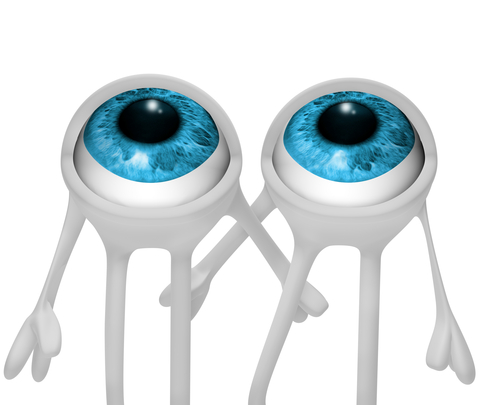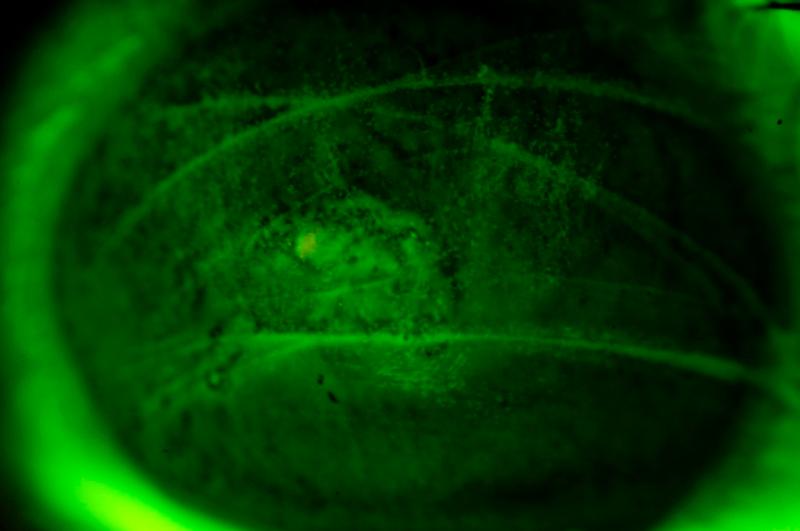|
|

International Newsletter and Forum on Rigid Gas Permeable Contact Lenses, Corneal Shape, Health and Vision |
|
|
|
|
|
|
|
|
|
|
No Rub
 In this high-tech world, it is sometimes hard to stay in touch with the basic rules. Take the correction of keratoconus, for instance. We do have corneal cross-linking (CXL) now, which has good potential for the future. Therefore it deserves a good share of attention. But what about eye rubbing? It doesn't get nearly the same amount of attention, but it seems pretty clear that rubbing the eyes, especially in patients who are predisposed, should be discouraged. See the many papers by McMonnies. Do we all take the time in our busy practices to talk to keratoconus patients about this? A positive outcome of the CXL procedure is that patients may limit rubbing their eyes (because they are told exclusively not to do so and/or because following surgery they feel it may not be a appropriated to do so). Now perhaps we need to find the time in our busy practices to do the same with all of our keratoconic patients (at risk), including the ones not undergoing CXL. At the upcoming Global Specialty Lens Symposium, an update on corneal cross-linking will be presented. I'm looking forward to it. Hope to see you there! Eef van der Worp
|
|
ROMEO
 The fall of last year featured a number of interesting studies on orthokeratology, which will be highlighted in this edition of the I-site newsletter. The 'Retardation of Myopia in Orthokeratology' (ROMEO) study in Hong Kong involved 102 kids ranging in age from 6-10 years with myopia between 0.50D and 4.00D and astigmatism not more than 1.25D who were followed for two years. The study, published in Investigative Ophthalmology & Vision Science (IOVS), showed that on average kids wearing orthokeratology lenses had a slower increase in axial elongation (by 43%) compared with kids wearing single-vision glasses. Younger children tended to have faster axial elongation and may benefit from early orthokeratology treatment, according to the authors. Cho, Cheung - IOVS - October 2012
|
|
Belladonna

The Belladonna plant (Atropa belladonna) has been known since the Roman era for dilating the pupil (in order to be more attractive - hence the name Belladonna, which means beautiful women in Italian). But what about (naturally) large pupils and their effect on myopia development? Researchers in China investigated the effect of large pupils on axial growth in orthokeratology. In this study, 52 kids aged 9-14 with myopia between 1.00D and 4.50 and astigmatism <1.50D were followed for two years. Axial growth was significantly slower in subjects with above average pupil sizes than in those with below average pupil sizes in the orthokeratology group, but pupil size did not affect axial growth in the single vision spectacle lens-wearing group. The authors speculate that the slower axial growth in orthokeratology subjects who have above average pupil sizes is because of enhancement of the myopic shift in the peripheral retina.
|
|
Two of a Kind
 A group in Turkey fitted 44 eyes of 22 patients who had myopia between 1.00D and 5.00D and cylinder ≤1.00D with two different brands of orthokeratology lenses to evaluate the refractive and corneal topographical changes with overnight orthokeratology. The mean manifest refraction spherical equivalent decreased from -2.70±0.9D to -0.50±0.08D in one group and from -3.1±1.1 to -0.62±0.18D in the other group at week 1 and remained stable thereafter in each group. It was concluded that both types of contact lenses safely and effectively decreased the myopic refractive error at the 1-year follow-up. Ozyol, Uçakhan-Gündüz, Ozyol, Kanpolat - Contact Lens & Anterior Eye - November 2012
|
|
Meetings
 For more on orthokeratology, the American Academy of Orthokeratology is holding its annual meeting Vision by Design from April 4-7 in Chicago (US). The 2nd international meeting of the IAO (International Academy of Orthokeratology) will be held in Brussels (Belgium) from June 28-30, organized by the European Academy of Orthokeratology.
|
|
Handle With Care

Fitting scleral devices combines science with art. The goals of fitting are to achieve an optimal vaulted reservoir over the cornea, minimize conjunctival compression, and avoid impingement of vessels and conjunctival tissue. The science involves protecting and maintaining the ocular physiology against compromise. The art of fitting is how we reach those goals. When treating a patient using scleral devices, proper application and removal training is also crucial for long-term success. The case reports presented here, on a 55-year-old patient and on a teenage patient - illustrate the importance of proper lens handling and guidance in this.
|
|
Upcoming Events
- GPLI 2013 webinar series
- GSLS, January 24-27 2013, Las Vegas US
- CCLSNZ, March 21-24, Roturua NZ
- COOK, March 29-31, Shanghai CN
- Innovative Sclerals, April 11-12, Hertford UK
- Cornea Day, April 19, San Francisco US
- Vision By Design, April 4-7, Chicago US
- CIOCV 2012, April 13-14, Braga PT
- EAOO, April 18-21, Malaga ES
- EFCLIN, May 9-11, Vilamoura PT
- BCLA, June 6-9, Manchester UK
- EurOK/IAO, June 28-30, Brussels BE
|
|
|
|
|
|
|
I-site is an educational newsletter that is distributed on a monthly basis and provides an update on rigid gas permeable related topics (scientific research, case reports and other publications worldwide). I-site is objective and non-political. Its editor Eef van der Worp, optometrist, PhD, FAAO, FBCLA, FIACLE, FSLS is a lecturer for a variety of industry partners, but is not related to any specific company. Please contact us at: i-site@netherlens.com.
|
|
|